Recliner sofas are used in hospitals, hotels, and offices—but each place needs something different. Choose the wrong one, and your client may end up with complaints or replacements.
The best recliner sofa is one that fits the setting. Hospitals, hotels, and offices all have unique needs, and your product must match the use case.
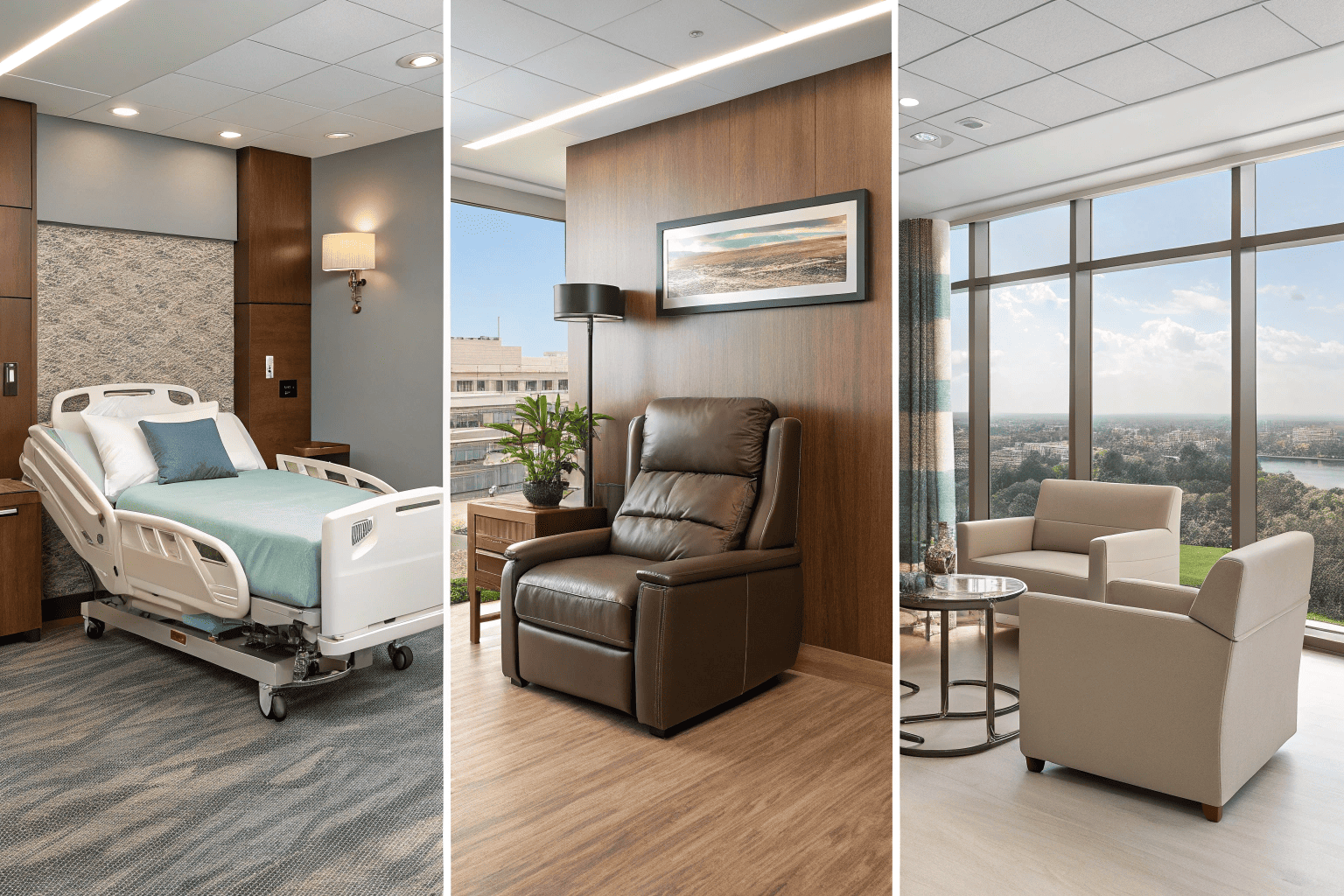
It’s not enough to compare prices or colors. In commercial projects, your success depends on choosing the right features for the right place. Let’s break it down.
Why Different Settings Need Different Recliner Sofa Designs?
Using one recliner sofa model for all projects may seem easier. But this shortcut often leads to product mismatch and customer dissatisfaction.
Hospitals, hotels, and offices each serve different users and require different recliner designs1 to meet safety, comfort, and design expectations.
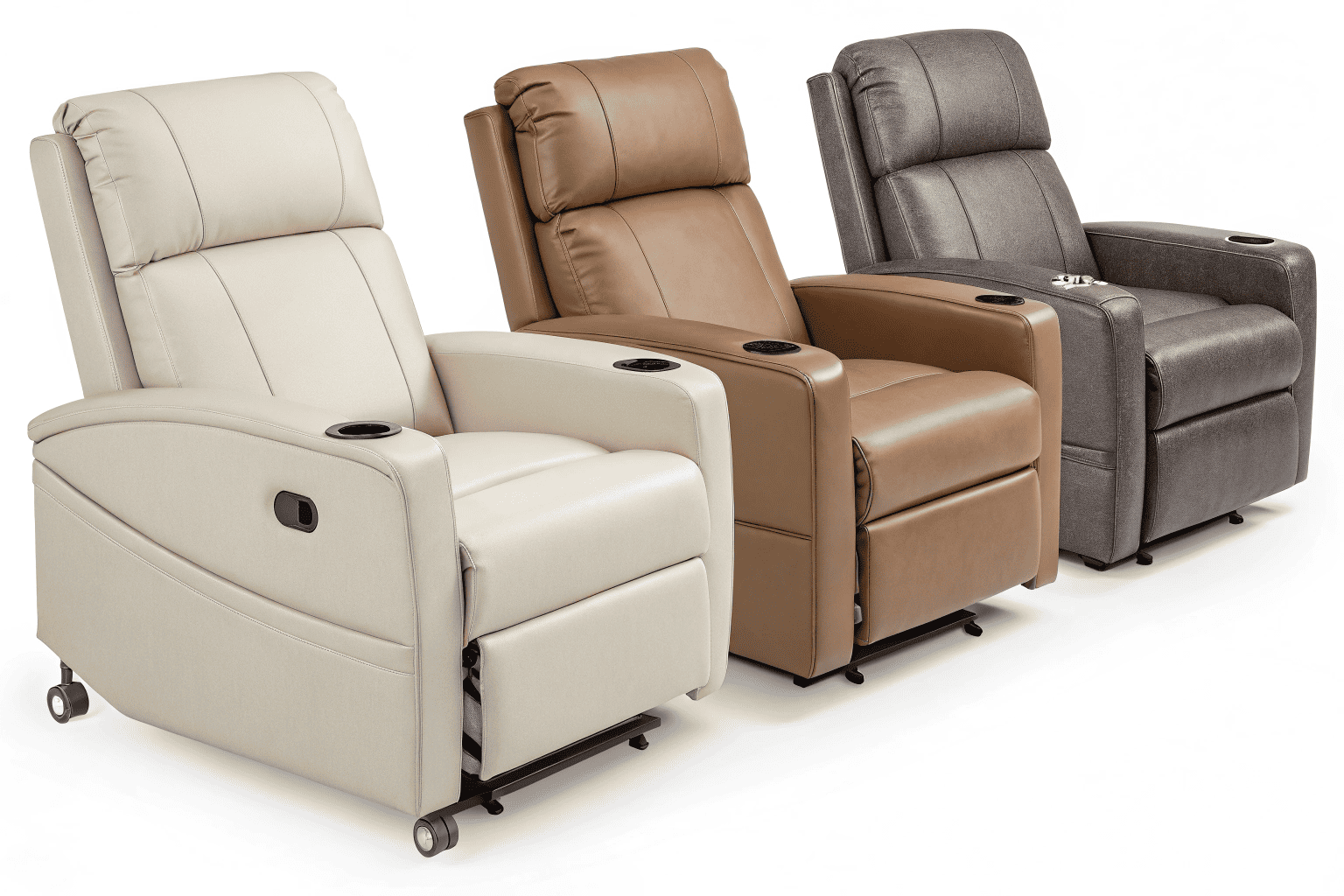
What Makes Each Setting Different?
1. User Type
| Setting | Typical User | Design Focus |
|---|---|---|
| Hospital | Patients and caregivers | Support, hygiene, quiet movement |
| Hotel | Guests and families | Comfort, aesthetics, features |
| Office | Staff and visitors | Ergonomics, size, style |
Hospitals focus on recovery. The recliner must support weak patients and allow easy movement. A narrow seat, slippery fabric, or noisy recline could cause serious problems.
Hotels look for visual impact and guest comfort. Recliners are part of the room’s experience, not just a utility. Texture, cushion thickness, and style all affect guest satisfaction.
Offices need compact and supportive chairs. These recliners help employees rest briefly, not lie down for hours. So, they need to be upright, clean-looking, and brand-consistent.
A product that works great in a hotel may be unsafe or awkward in a hospital room. One that fits an office might feel too cheap for a guest suite. That’s why design must start with purpose.
Key Features Hospitals, Hotels, and Offices Look For?
Project buyers have different goals. Some want comfort first. Others need durability. But without understanding the core demands of each setting, features can backfire.
Commercial recliner projects succeed when features match actual use—like stain resistance2 for hotels, medical vinyl for hospitals, or ergonomic backrest3 for offices.
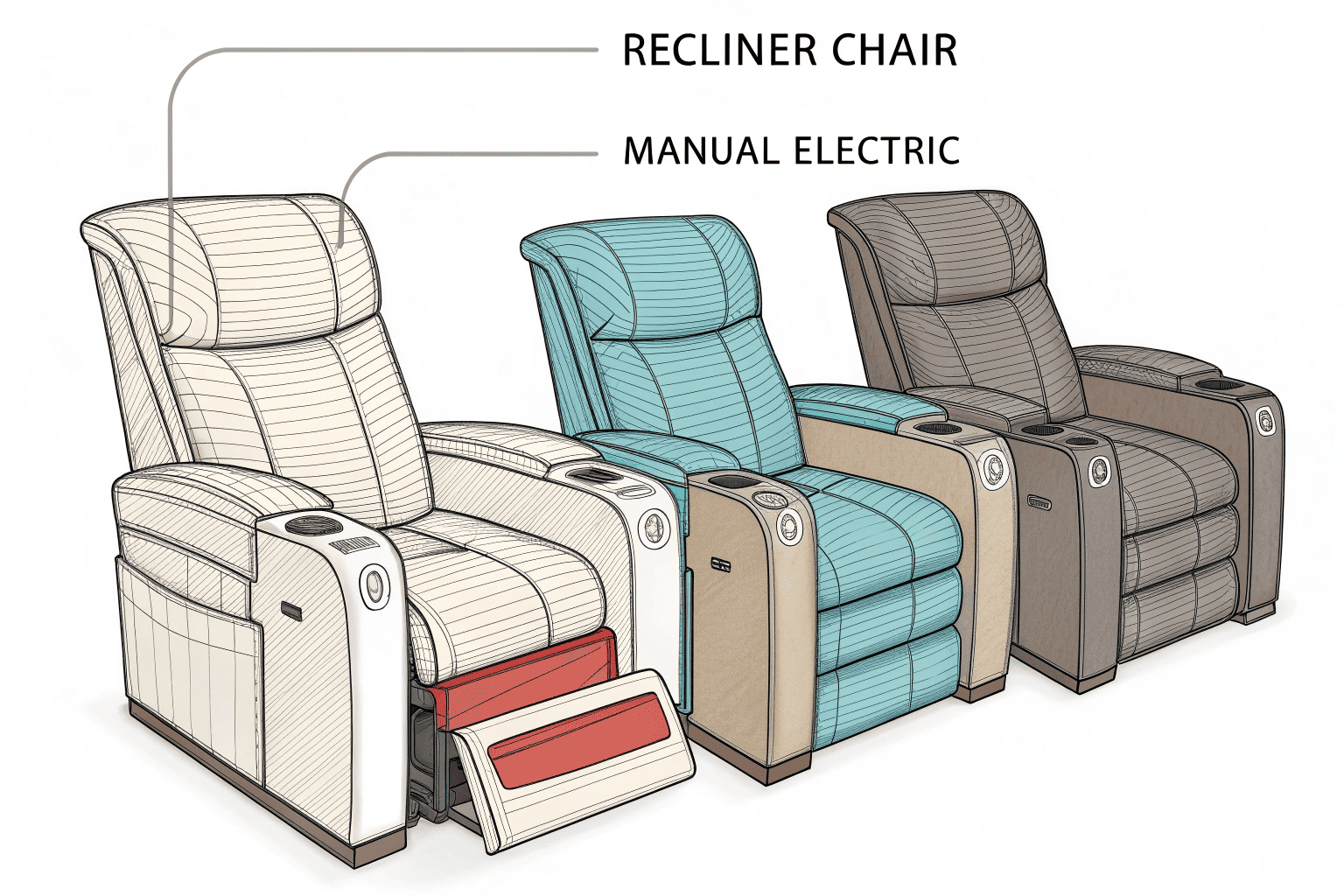
Features That Matter Most
| Feature | Hospital Focus | Hotel Focus | Office Focus |
|---|---|---|---|
| Upholstery | Antibacterial vinyl | Soft-touch PU or fabric | Neutral tones, breathable |
| Foam Density | Firm (35kg/m³+) | Medium (28–32kg/m³) | Balanced support |
| Recline Mechanism | Silent manual/electric | Electric, smooth action | Manual or fixed angle |
| Add-ons | IV pole slot, wheels | USB, cupholder, swivel base | USB port, compact armrest |
| Aesthetics | Clinical but clean | Luxurious and inviting | Minimal and modern |
A hospital recliner is part of medical care. It must be easy to clean, strong enough for daily use, and supportive for recovery. Most buyers ask for quiet manual systems, or motors that don’t distract patients.
In hotels, the recliner is part of the guest experience. Fabrics need to resist stains but still look elegant. Optional features like cup holders or charging ports are often requested by 4- and 5-star properties.
In offices, buyers care about space and color. They want seating that looks modern, fits in lounges, and offers posture support without taking too much floor space. Noise and bulk are dealbreakers.
You don’t need to include every feature in every chair. The key is alignment with the actual environment.
How to Match Recliner Sofa Materials with Commercial Usage?
Most buyers notice fabric color first. But what really matters is how the material performs over time—in hot rooms, after spills, or with rough use.
To match recliner materials to commercial settings, choose based on cleaning needs, frequency of use, climate, and design expectations.
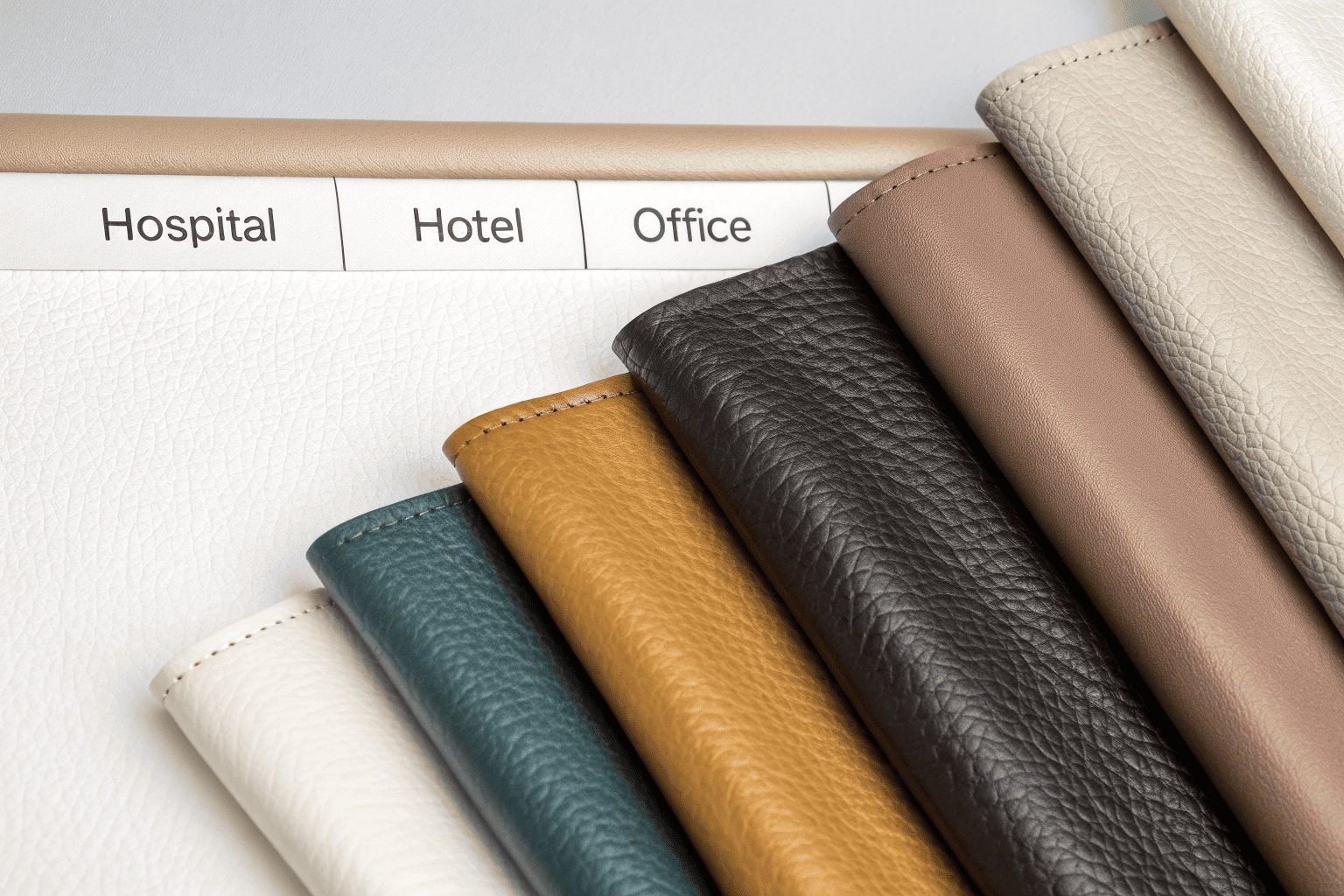
Choosing the Right Material
| Material | Best Use Case | Strengths | Weaknesses |
|---|---|---|---|
| Medical-Grade Vinyl | Hospitals | Easy to clean, antibacterial | Less stylish, stiff feel |
| Faux Leather (PU) | Hotels, Offices | Luxurious look, soft feel | Can crack over time |
| Poly-Blend Fabric | Offices, Hotel | Breathable, varied colors | Needs treatment for stain & fire |
| Real Leather | VIP/Executive use | Premium, long-lasting | Expensive, requires upkeep |
Foam Considerations
Foam density also impacts comfort and performance. At our factory, we tailor foam to the project:
- Hospitals: firm 35–40kg/m³ for body support
- Hotels: mid-soft 28–32kg/m³ for relaxed comfort
- Offices: 30kg/m³ with lumbar contouring
Surface Finish
Matt vs glossy, textured vs smooth—these details affect not only look but also user interaction. In humid or hot regions, we often suggest less sticky materials like breathable fabric blends.
Matching material isn’t just visual. It controls hygiene, aging, and satisfaction across months and years of use.
Hospital Recliners vs Hotel Recliners vs Office Recliners: What’s the Difference?
Some buyers still ask for “one model fits all.” But in real-world use, these differences matter—and ignoring them creates complaints and costs.
Hospital recliners prioritize hygiene and accessibility. Hotel recliners focus on comfort and features. Office recliners emphasize compact design and posture support.
Structural & Functional Differences
| Spec | Hospital | Hotel | Office |
|---|---|---|---|
| Recline Mechanism | Silent manual/electric | Electric motor preferred | Fixed/manual |
| Cushion Shape | Firm with flat base | Soft and deep seats | Upright with support |
| Armrest Style | Drop-down or slim | Plush and wide | Minimalist, fixed |
| Accessories | Wheels, IV slot | USB port, cup holder | Optional USB |
| Upholstery | Medical vinyl | PU or stain-treated fabric | Neutral-tone fabric |
Hospital recliners help people heal. They must be practical and cleanable, even during emergencies. We design ours with easy-access armrests and stable structure.
Hotel recliners help people relax. Guests want smooth motion, soft touch, and a luxurious feel. The visual appeal matters, so stitching, leg design, and color all contribute.
Office recliners are for short breaks. Buyers want chairs that don’t crowd the room, match their branding, and offer just enough comfort without putting workers to sleep.
A well-matched recliner solves problems. A mismatched one creates them.
B2B Buyer Checklist: What to Ask Before Choosing a Recliner Supplier?
Some buyers jump in too fast—without checking key specs or policies. That’s when surprises happen during shipping or after installation.
Before choosing a recliner supplier, B2B buyers must ask about test reports, mechanisms, fabric specs, MOQ, lead times, and after-sales terms.
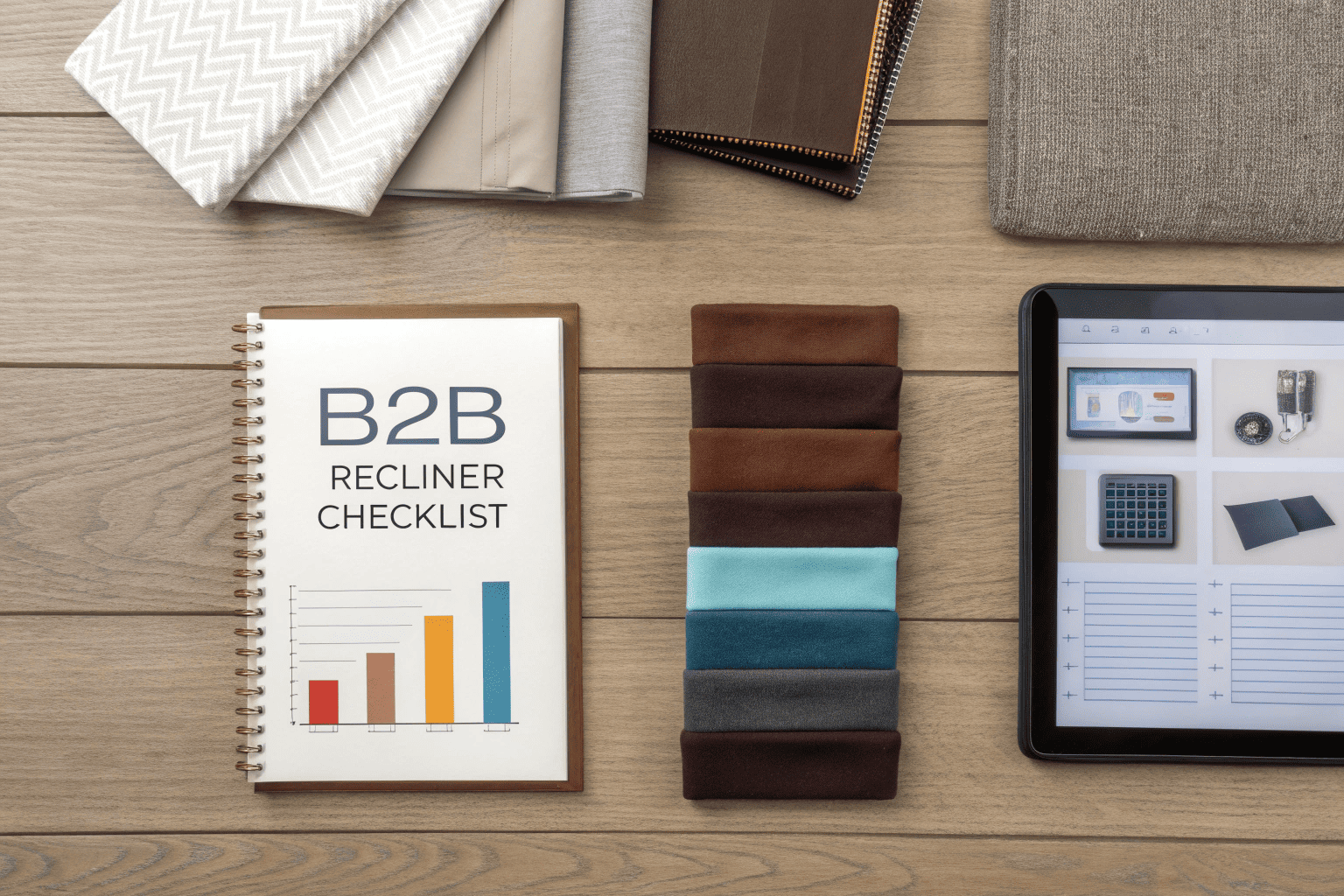
Questions to Ask Every Time
| Category | Essential Questions |
|---|---|
| Function | Is the recline manual or electric? Brand of motor? |
| Materials | Foam density? Fabric treatment for fire/stain resistance? |
| Certifications | Any EN, BIFMA, fire-resistance reports? |
| Customization | Fabric options? Stitching, legs, add-ons? |
| Packaging | KD or assembled? Safe for sea freight? |
| MOQ & Lead Time | Minimum order quantity? Production time? |
| After-Sales | Replacement policy? Spare parts available? |
Also request:
- Sample photos or videos (actual footage, not renderings)
- Testing footage (foam rebound, mechanism cycling, frame load)
- Packing pictures (before container loading)
The more you ask now, the fewer surprises later.
Manufacturer’s Note: How We Customize Recliners for Your Projects
Over the past decade, we’ve helped B2B clients furnish hospital wards, hotel suites, executive lounges, nursing homes, and office rest zones across 30+ countries. What we’ve learned is this: the “right” recliner isn’t about price alone—it’s about how well it serves the setting and the user.
In hospital projects, clients often prioritize:
- Soft yet firm support for patient comfort and mobility
- Medical-grade, easy-to-clean fabric (PU, antibacterial vinyl)
- Silent, smooth manual or electric mechanisms
In hotel applications, buyers demand:
- A balance of comfort and premium aesthetics
- Stain-resistant, durable fabrics for high occupancy turnover
- Optional add-ons like USB charging, cup holders, or swivel bases
For corporate or office use, our clients typically seek:
- Sleek, space-efficient silhouettes
- Recliners that support posture during short breaks
- Materials that match the interior branding of executive suites or staff lounges
As a manufacturer, we’ve developed specific foam densities, reclining mechanisms, and fabric systems for each application scenario. For example, we offer OKIN and DEWERT motor systems for electric recliners in premium projects, while using tested manual mechanisms for budget-sensitive healthcare tenders.
Every project starts with a conversation—about usage frequency, user profile, cleaning requirements, and space constraints. From there, we propose configurations that meet technical specs, visual design, and target pricing.
If you’re sourcing recliner sofas for a business setting and need more than just catalog pictures, we’ll help you test samples, evaluate options, and make decisions based on real project needs—not guesswork.
Let’s talk about your next project—and we’ll help you find the recliner that fits, performs, and lasts.
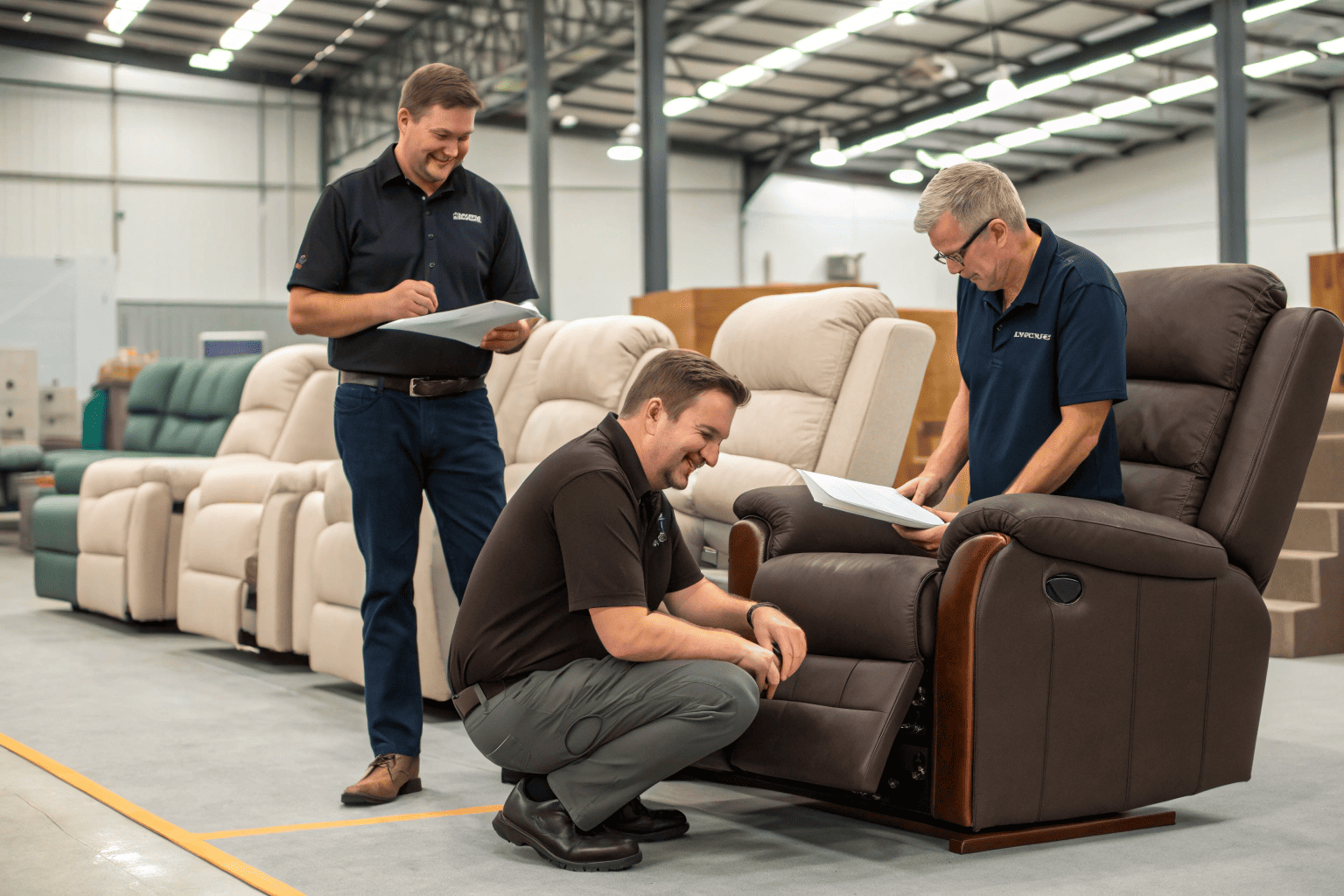
Conclusion
Choosing the right recliner sofa for a hospital, hotel, or office is not about following trends—it’s about understanding people and spaces. Each setting has its own needs. Hospitals require safe, cleanable, and supportive recliners. Hotels demand comfort, elegance, and durability. Offices look for compact, modern designs with ergonomic value.
As a manufacturer, we’ve seen many buyers face the same challenge: making decisions without the right information. That’s why we always encourage a project-first mindset. Start by asking: who will use the recliner, how often, and in what kind of environment? Then think about features, materials, mechanisms, and certifications.
Every project is unique. That’s why we don’t just offer products—we offer options. You can choose your foam density, your fabric finish, your recline function, and more. Whether you’re designing for a hospital ward, an executive suite, or a luxury guest room, we can build a solution that fits your goals.
If you want to make sure your next recliner order works—not just looks good—we’re here to help. Let’s talk through your project and make sure every seat is the right seat, for the right user, in the right place.
-
Explore how different recliner designs cater to specific environments like hospitals, hotels, and offices. ↩
-
Explore the significance of stain-resistant materials in enhancing the longevity and appeal of hotel recliners. ↩
-
Find out how ergonomic backrests improve posture and comfort in office settings. ↩

